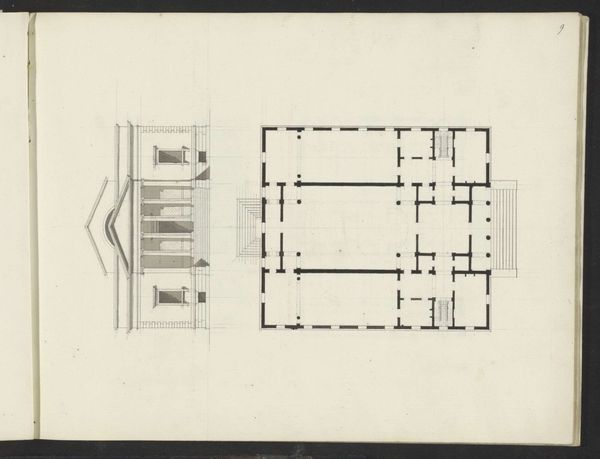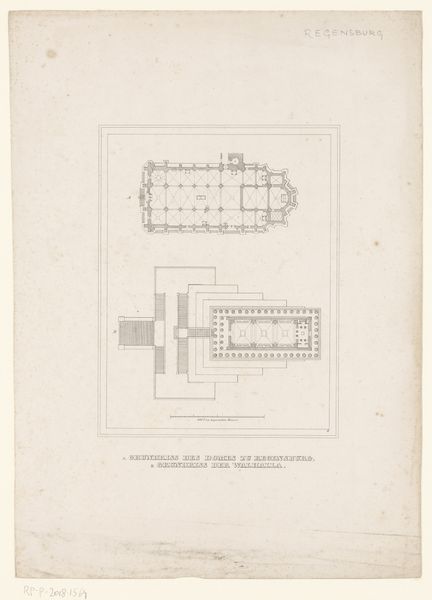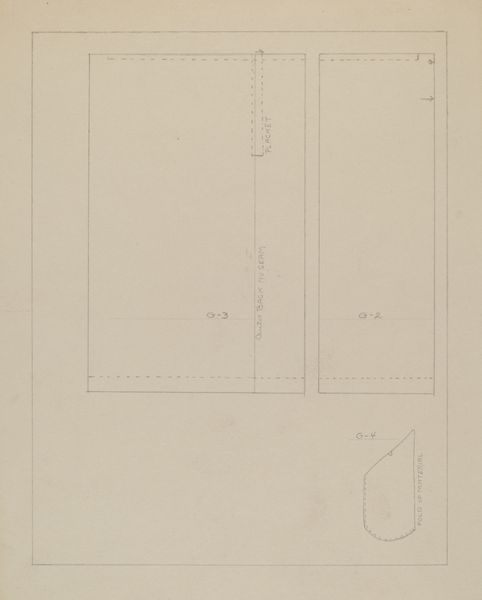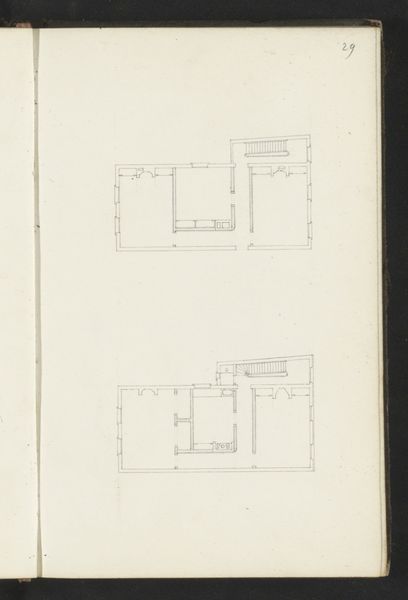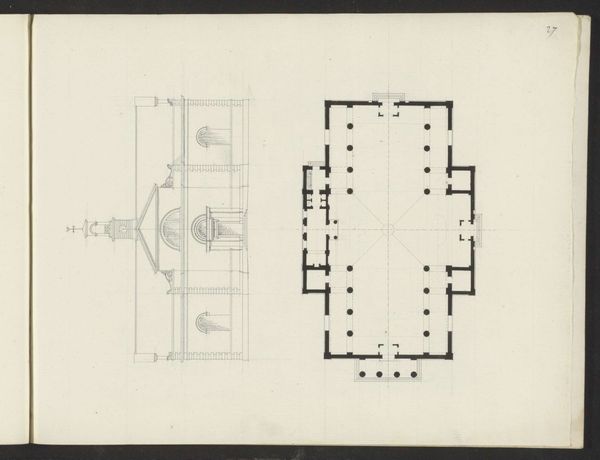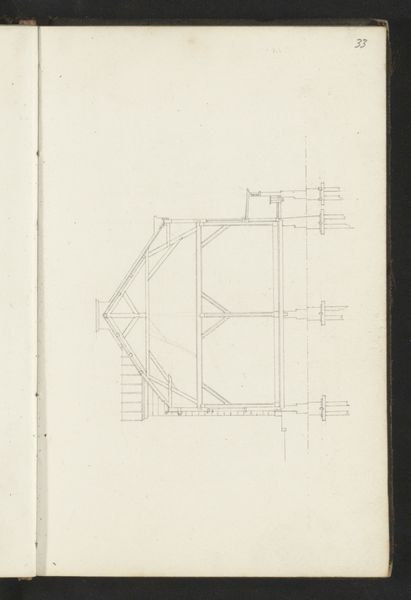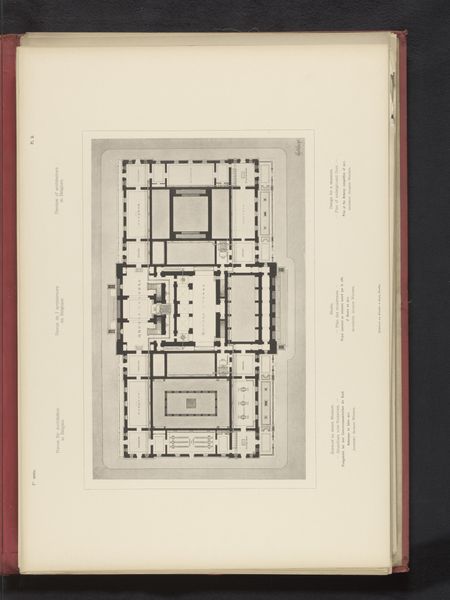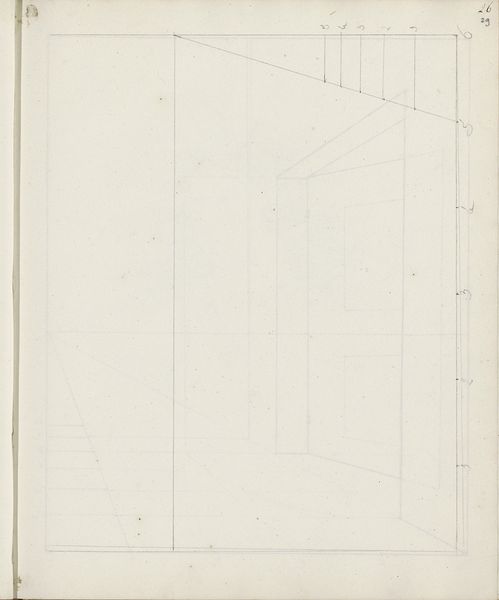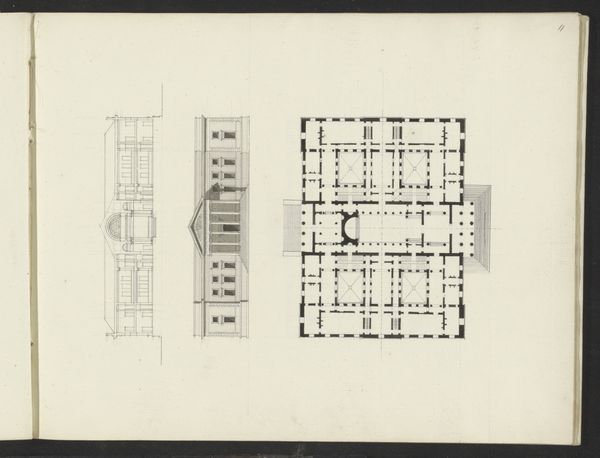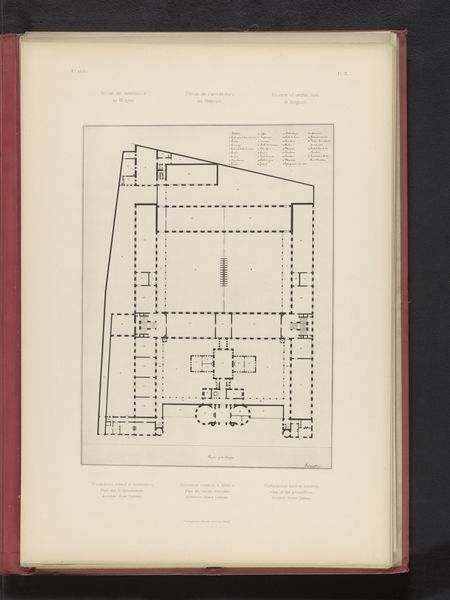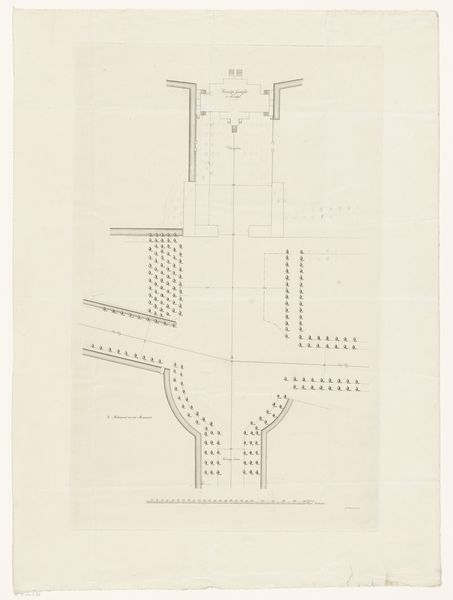
drawing, print, etching, architecture
#
drawing
# print
#
etching
#
landscape
#
etching
#
geometric
#
architecture
Dimensions: height 332 mm, width 277 mm
Copyright: Rijks Museum: Open Domain
Curator: Here we have "Plattegrond van het fundament van de rechtbank te Westzaan," a detailed foundation plan for a courthouse, created by Theodoor Koning in 1782. It is an etching, a print rendered with a high level of detail. Editor: My immediate reaction is to its surprising delicacy. For something that is meant to represent, quite literally, the bedrock of justice, the rendering is ethereal, almost fragile. Curator: Precisely. Looking at it through a sociopolitical lens, one might consider the foundation not just as a structure, but also metaphorically. Whose justice is being built, and on what pre-existing conditions or inequalities? What ideological pillars uphold its power? Editor: That’s interesting, but first, note the sheer repetition in the design— the gridded pattern. I read this as a calculated emphasis on order, on the very idea of the grid as an embodiment of rational planning. Semiotically, it reads like a visual declaration of intent: that the laws enacted within would follow similar principles of structure and calculated order. Curator: And who gets to define order, and according to whose norms? During this time period, there was a social stratification along lines of class and gender. Architecture like this both reflected and reinforced existing power structures. A very careful observer might also question who had the agency to participate in the juridical process represented here. Editor: I would propose focusing first on Koning’s mastery of line and his delicate execution in the etching, giving depth to an image that risks flatness due to its subject matter. The contrast between the precision of the lines and the subject matter also create an inherent tension, adding another layer to its reading. Curator: Agreed, that technique enhances its impact, but it’s vital we ask critical questions: who designed it, for whom was it intended, and what implicit biases are encoded within its formal elements, because structures are not neutral. Editor: Perhaps... Well, looking at it again, I appreciate how our very different lenses can reveal new angles within this image. Curator: Absolutely. Approaching art from various perspectives fosters greater historical, sociological, and aesthetic understanding.
Comments
No comments
Be the first to comment and join the conversation on the ultimate creative platform.

